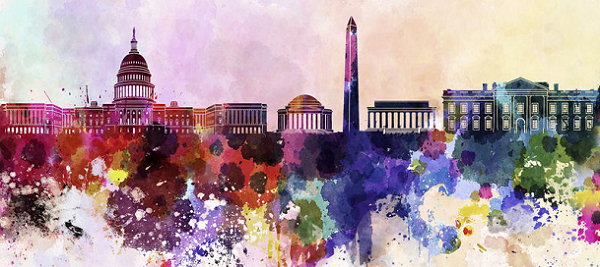 Gentrification might be a controversial and politically wrought term, but for real estate investors it spells an opportunity of a life time. Though we remain steadfast in our philosophy that in real estate you make money when you buy, it’s hard not be excited by the home appreciation rate in some of the DC neighborhoods. As one of the top hard money lenders in Washington DC, we’ve seen our clients earn significant profits turning dilapidated properties into swanky homes for the upwardly mobile. Are you considering DC as your next investment project? Here are some data, resources and advice to get you started.
Gentrification might be a controversial and politically wrought term, but for real estate investors it spells an opportunity of a life time. Though we remain steadfast in our philosophy that in real estate you make money when you buy, it’s hard not be excited by the home appreciation rate in some of the DC neighborhoods. As one of the top hard money lenders in Washington DC, we’ve seen our clients earn significant profits turning dilapidated properties into swanky homes for the upwardly mobile. Are you considering DC as your next investment project? Here are some data, resources and advice to get you started.
First of all, let’s define “gentrification.” Gentrification describes the arrival of wealthier people in an existing urban area. This arrival changes the area’s character and culture. It also increases rents and property values. Gentrification remains rare nationally, but we apparently live in its epicenter. In 2019, the US News ranked Washingon, DC, as the fastest gentrifying market in the nation, with Baltimore City was ranked the sixth. To dig deeper into how gentrification affects particular DC neighborhoods, you can check out this interactive study on gentrification mapping in Washington, DC.
DC gentrification is fueled by an influx of young and affluent residents. In fact, the Washington Post reports that between 2009 and 2012 our area saw the largest increase in Millennials than any other area. They are largely responsible for making Petworth, Navy Yard, NoMa and Columbia Heights some of the trendiest neighborhoods in DC. We’re now seeing gentrification east of Anacostia, in the areas many hard money lenders have historically considered too risky for investment.
Gentrification is not without problems. The lack of affordable housing is an increasing issue. It’s a leading cause of displacement for the lower-income Washington, DC residents unable to afford higher costs of living. The DC government has been attempting to solve the issue with the initiatives such as The Green New Deal for Housing Act, often with a variying degree of success. The Act allows for one-third of all units in social housing building to be reserved for extremely low-income residents, which can help residents that can no longer afford skyrocketing rent prices to remain in their neighborhoods.
Those aspiring to invest in one of the gentrifying neighborhoods in DC should keep several things in mind.
Do not overbid.
Yes, some areas are appreciating rapidly, but there is always a danger when you need to rely on appreciation for your profits. Each block in DC has its own price range. Make sure your after-repair value is realistic and is based on the comps in the immediate area, not a mile away from your subject property. In the densily populated areas such as Washington, DC, typically you can find plenty of comps within 0.1 miles to a half mile radius from your subject.
Watch out for properties in weird locations.
To a novice investor, these types of properties might appear an irresistible bargain. Beware though. Is the property located near a noisy store, a gas station or bordering an area that is zoned commercial? We recently had a client who was thinking about buying a property in Deanwood. At a glance, the deal had a nice profit margin until we discovered that a house is located right behind a metro line. Hard money lenders are hesitant to lend on such properties and for good reasons. Such properties are hard to evaluate and their market price is often unpredictable. We’ve shared our reservations with our borrower who eventually decided to walked away from the deal.
Plan for longer rehab and renovation.
When working with hard money lenders, you want to move fast. However, you also need to be realistic when planning your rehab. If you need to get any permits or inspections in DC, allow for extra time – DC is notoriously slow.
For those who are planning on a condo coversion (aka turning a single family home into individually titled condominimums), the process might take even longer. You can start working on permits only after submitting and getting an approval on architectural permits which both are costly and time consuming.
Whether you call it “gentrification” or “community revitalization”, Washington DC is a wonderful area to live and to invest in. It is also a thriving real estate market that offers unparalleled opportunities for real estate investing. However, a savvy investor cannot and should not fall victim to the hype. Keep your cool, remove emotions and do a thorough analysis of each deal that comes your way. Above all, be respectful of its history and honor its past, present and future.
 New Funding Resources
New Funding Resources 





Leave a Reply